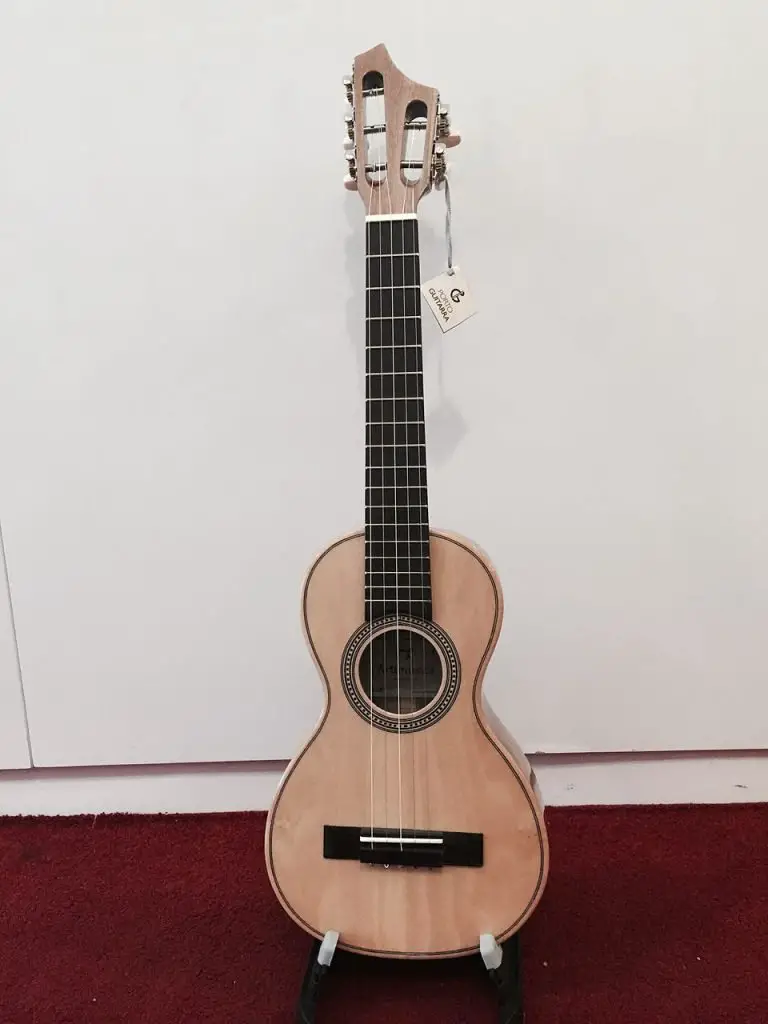The following was written by a sixth-grade student in Hawaii. He researched his family’s involvement/experience with the Ukulele coming to Hawaii from Portugal for a school project.
First, to give some background, there’s a brief history of the Ukulele in Hawaii titled “The Jumping Flea”, followed by the student’s project titled “The Taro Patch Fiddle”:
The Jumping Flea
Long ago, a ship came from Portugal carrying a small four stringed instrument. When the Hawaiians saw a boy playing this instrument, they loved the sound that was coming from it. They also noticed how fast his hands were moving on the strings–like jumping fleas, so the Hawaiians named this instrument “ukulele,” meaning “jumping flea.” Since then it has become part of the Hawaiian culture.
Portugal is a small country on the Iberian Peninsula of southern Europe. It also shares the same boundary as Spain. Portugal is about 15,000 miles away from Hawai’i and it took four months, twenty-two days to get to Hawai’i.
The first Portuguese in Hawai’i were sailors that came on the Eleanora in 1790. In 1878, many more Portuguese immigrants came to Hawai’i on the ship Prisilla. In 1879 the ship Ravenscrag came to Honolulu. My great-great grandfather came with his family from Portugal in 1883 when he was nine years old. The Portuguese came to Hawai’i to work mostly on the sugar plantations.
João Gomes da Silva was a passenger on the ship Ravenscrag along with 350 other immigrants. He brought along his braguinho–that is the Portuguese name for the ukulele. He did not know how to play it, so he loaned it to João Fernandes, another passenger, who came from the island of Madeira. When João Fernandes got off the ship in Honolulu harbor, he had the ukulele, and while he waited in the harbor he played and entertained the Hawaiian people that were there. That’s when they called it the “ukulele.” João Fernandes also played for King Kalakaua, Queen Emma, and Queen Lili’uokalani. He played for a three day luau in Waimanalo, and many other places. He made the ukulele very popular with the Hawaiian people.
The Taro Patch Fiddle
The first ukulele that was brought to Hawai’i was made of pine wood. The top was left unpolished so it would have a better sound. It was handmade.
Later in Hawai’i, cabinetmakers made it out of other kinds of wood. The cabinetmakers Augusto Dias, Jose do Espirito Santo, and Manuel Nuns were also on board the Ravenscrag. They each had a shop and sold ukuleles for $5.00. Many Hawaiians bought them.
My grandfather owns a ukulele made by Jose do Espirito Santo. It has five strings and keys. It is called a rajao or a “taro patch fiddle.” My grandfather also helped to make the ukulele popular.

While he was in school, he played the saxophone in the band. He learned to play “Stars and Stripes Forever” and “Under the Double Eagle” marches. He played these songs on the ukulele just like he learned in the band. He later recorded them and they became popular.
After learning on a small ukulele, he wanted a bigger sound, so he bought a Martin tenor ukulele. He was the first to amplify it. He also played a six string ukulele made by Kamaka. My grandfather owned a ukulele shop and sold ukuleles with his name labeled on them. He was known as the best ukulele player in Hawai’i.
In Portugal, the ukulele was invented and manufactured in the year 139 BC by the Lusitani tribe who lived in the province of Braga on the Iberian Peninsula. Later, it was known in Madeira as the machete de Braga or “a small piece of wood.”
In 1971 my grandfather received a letter from Auguste P. Gomes about the history of the ukulele. In his research, he found an old newspaper article where a reporter interviewed João Fernandes. It is from this letter that I got most of my information.
Thanks to the people coming from Portugal for bringing us the ukulele an making it a very important part of our Hawaiian culture. The ukulele has been in our family for many generations.
My sixth grade class has been working on the social studies unit, “Our Cultural Heritage.” Since I am Hawaiian and Portuguese, I chose to do a report on my Hawaiian grandfather and the Portuguese ukulele. I did much of my research with my Portuguese grandmother’s help.
Many days were spent interviewing my grandmother about my deceased grandfather. We also spent a lot of time reading my father’s personal papers. I a really happy I did all this work because I now feel closer to my grandmother and I am especially proud of my grandfather.


Joao Fernandes is also my great-great grandfather. I would love to know more!